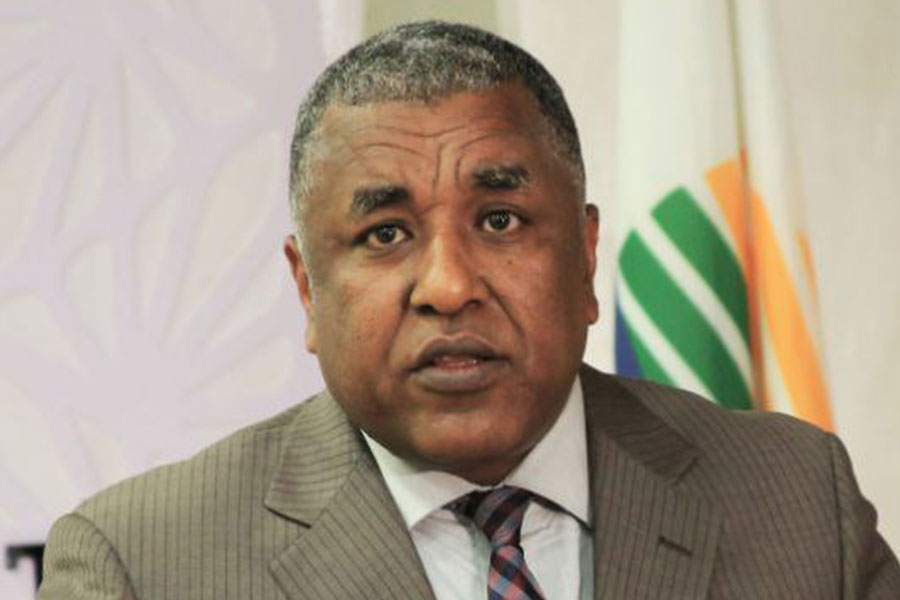
Radar | Oct 09,2021
Oct 3 , 2020
By Yonas Mesfin
The new directive by the central bank that allows microfinance institutions to be relicensed as conventional banks needs to be deliberated on further. It could serve as a disincentive that diverts attention, energy and resources from the main function of microfinance, writes Yonas Mesfin (yonasmsfn6@gmail.com), who graduated from Amsterdam University in alternative dispute management.
The National Bank of Ethiopia (NBE) recently issued a directive that allows microfinance institutions (MFIs) to upgrade into conventional commercial banks. The directive is just one of many changes the financial industry is undergoing during Prime Minister Abiy Ahmed's (PhD) administration.
However, carried out without satisfactory deliberations, this specific reform may trigger unanticipated problems. Microfinance institutions are designed to serve a distinct purpose that compliments the development model of the nation; allowing them to upgrade into conventional banks may distract them from their core objective.
“Microfinance” is generally used to refer to those financial institutions that are characterised by their commitment to assisting typically lower-income households and small enterprises in gaining access to financial services. The typical nature of MFIs, most importantly, serves socio-economic objectives by directing investment into priority sectors by allocating finance to where it is most in-demand, mobilising savings to finance operations and the provision of financial services to disadvantaged sections of lower-income members of the society and smaller enterprises.
When compared to the conventional commercial financial institutions, the prudent functionality of MFIs has played a major role in the attainment of public objectives by availing finance in a relatively cost-effective manner. As long as the rules are clear and objectives remain realistic, they are powerful tools for bringing about the economic development of rural areas in developing countries like ours. This is why such institutions get support from governments, NGOs and development partners.
Ethiopia was too late to open its eye to MFIs. It was the financial sector reforms of the early 1990s that created the groundwork to allow their establishment. Subsequent legal frameworks culminated in the first MFI establishment proclamation in the mid-1990s.
Consequently, MFIs have flourished, more aggressively in the regional states than in Addis Abeba, the latter of which depends overwhelmingly on conventional commercial banks for financial services. Since their establishment, research has shown that these institutions have a relatively positive record. Their wide outreach, huge savings mobilisation in the countrywide, collection performance and financial sustainability have been impressive despite the high-interest rates they charge.
Savings, loans and collecting payments such as taxes and pensions are among the common services they currently deliver. By the third quarter of the last fiscal year, Ethiopia’s MFIs had mobilised 43.3 billion Br in savings, given out credit worth 60.8 billion Br and hold 89.6 billion Br in assets.
The size and capital of some of these institutions are huge. Take the Amhara Credit & Saving (ACSI) and Oromia Credit & Saving institutions, some of the largest in the industry. The former has registered capital of 8.5 billion Br as of this writing, and the latter had a capital of 2.2 billion Brr as of June 30, 2018.
Still, there is a need to improve access to financial services in Ethiopia. Large sections of the population remain unbanked and unable to get credit services to open businesses. The urgent need for microfinance institutions is still evident and remains unquenched. It is why the latest directive by the central bank seems short-sighted.
Though the directive is something to be welcomed in the eyes of MFIs, it also has the potential to adversely affect their role in the economy. This may be the case even if the continuity of their microfinance services is required after being licensed.
What was the rationale that demanded the release of this directive?
As before, reforms in the current administration seem to be going forward without enough deliberation. This goes against the spirit of the recently passed administrative procedure, which necessitates broad discussions and deliberations on almost all directives and regulations.
Indeed, the issue may seem innocuous on the surface. However, experiences from other countries show that only a few commercial banks continue to effectively provide microfinance services after upgrading. This arises out of the immense extra effort required to meet the demand of the former.
It is also not far-fetched to assume that funds would be prioritised for conventional banking at the expense of microfinance considerations. This is likely to be the case as the MFIs are required to have limited shares - 70pc - government involvement and are likely to be profit-oriented even at the expense of carrying out their core duty of ensuring lower-income groups have access to finance.
These are the possible problems the directive might create. It is, after all, only the largest MFIs that will attempt to be relicensed as commercial banks. In fact, the Amhara Credit & Saving Institution is already undertaking this process, having already reduced the share of the Amhara Regional State in the bank to 70pc, the highest share requirement allowed to be owned by a government entity.
Certain measures to mitigate the negative consequences may be put in place, such as creating a dedicated MFI unit within the re-licensed commercial bank to avoid such services from being overshadowed. This, though, may not go far enough.
What is needed is to digest and, if necessary, reconsider the decision in light of the massive unintended consequences it might have. The primary role of MFIs will never diminish. Most economists agree that they play an indispensable role in the financial sector of any given undeveloped economy. When it is evident that the capacity and outreach of existing MFIs has been inadequate, such a directive may worsen the problem by disincentivising them.
PUBLISHED ON
Oct 03,2020 [ VOL
21 , NO
1066]


Radar | Oct 09,2021

Radar | Jan 16,2021

Fortune News | Oct 15,2022

Commentaries | Jun 21,2025

Fortune News | Oct 09,2021

Radar | Mar 07,2020

Radar | Dec 14,2019

Fortune News | May 17,2025

Radar | Oct 23,2023

Fortune News | Nov 27,2021

My Opinion | 131981 Views | Aug 14,2021

My Opinion | 128369 Views | Aug 21,2021

My Opinion | 126307 Views | Sep 10,2021

My Opinion | 123925 Views | Aug 07,2021

Dec 22 , 2024 . By TIZITA SHEWAFERAW
Charged with transforming colossal state-owned enterprises into modern and competitiv...

Aug 18 , 2024 . By AKSAH ITALO
Although predictable Yonas Zerihun's job in the ride-hailing service is not immune to...

Jul 28 , 2024 . By TIZITA SHEWAFERAW
Unhabitual, perhaps too many, Samuel Gebreyohannes, 38, used to occasionally enjoy a couple of beers at breakfast. However, he recently swit...

Jul 13 , 2024 . By AKSAH ITALO
Investors who rely on tractors, trucks, and field vehicles for commuting, transporting commodities, and f...

Jul 5 , 2025
Six years ago, Ethiopia was the darling of international liberal commentators. A year...

Jun 28 , 2025
Meseret Damtie, the assertive auditor general, has never been shy about naming names...

Jun 21 , 2025
A well-worn adage says, “Budget is not destiny, but it is direction.” Examining t...

Jun 14 , 2025
Yet again, the Horn of Africa is bracing for trouble. A region already frayed by wars...

Jul 6 , 2025 . By BEZAWIT HULUAGER
The federal legislature gave Prime Minister Abiy Ahmed (PhD) what he wanted: a 1.9 tr...

Jul 6 , 2025 . By YITBAREK GETACHEW
In a city rising skyward at breakneck speed, a reckoning has arrived. Authorities in...

Jul 6 , 2025 . By NAHOM AYELE
A landmark directive from the Ministry of Finance signals a paradigm shift in the cou...

Jul 6 , 2025 . By NAHOM AYELE
Awash Bank has announced plans to establish a dedicated investment banking subsidiary...